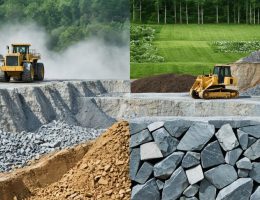The true environmental cost of human activity extends far beyond immediate financial calculations. As our planet grapples with climate change, resource depletion, and ecosystem disruption, understanding these hidden costs has become crucial for sustainable decision-making. Every product we consume, building we construct, and service we utilize leaves an environmental footprint – from carbon emissions and water pollution to habitat destruction and biodiversity loss.
Natural stone extraction, processing, and transportation represent a perfect case study of these complex environmental trade-offs. While stone is celebrated as a …










